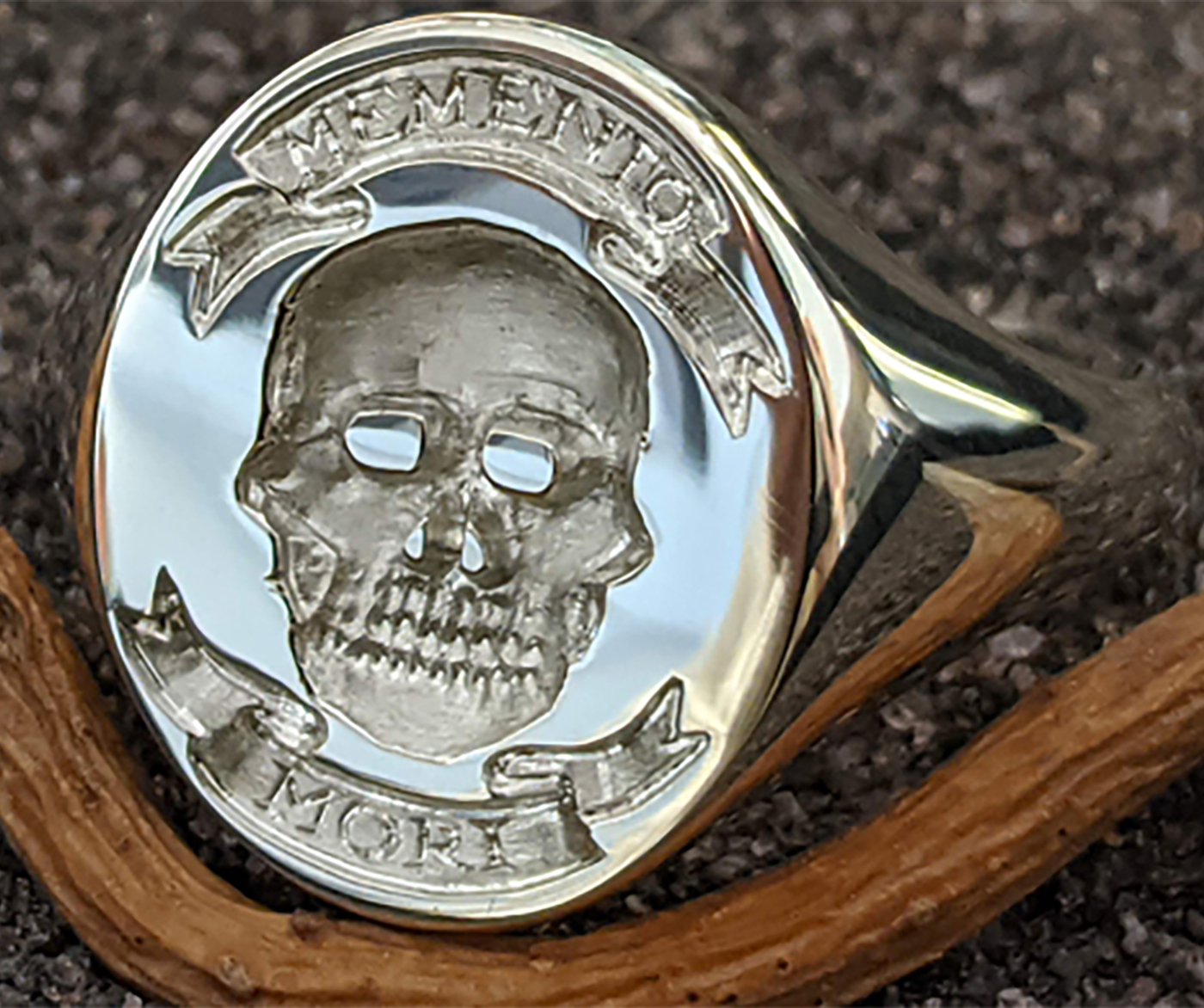During the 16th to 18th centuries, nowhere was this message more apparent than on the memento mori jewellery that adorned everyone from wealthy middle-class merchants to royalty. But contrary to popular belief, the symbolism behind these fascinating pieces owes less to the macabre and more to the celebration and veneration of life.
Looking back to the early 1600s, contemplation of mortality was a prominent theme across art and literature. It was the age of Shakespeare's Hamlet soliloquising over the skull of Yoric, and of vanitas paintings - depicting skulls, melting candles, and rotting fruit - making their mark across the Netherlands and other European nations. With the average life expectancy a sobering 43 years of age, it's no wonder that this obsession with death took hold.
At this time, memento mori jewellery becomes de rigueur. Translated from the Latin as 'remember you must die', rings, pendants and brooches bearing skull and crossbone motifs were widely worn among elite society. These pieces, reminders of the brevity of life, were primarily designed to inspire the wearer to carpe diem. But they also symbolised Christian beliefs on the eternal nature of death; jewellery to remind you to live piously or risk eternal damnation.
Often engraved with personal mottos or biblical inscriptions in Latin, memento mori carried unique meaning for those that wore them. Mary Queen of Scots herself owned a silver watch in the form of a skull, engraved with a quotation from the Roman poet Horace,
"Pale death knocks with the same tempo upon the huts of the poor and the towers of Kings."
For Catholics like Mary, memento mori were deeply entrenched in belief systems around mortality and the final judgement, but for Protestants at the time they were seen as more of a statement on personal success. For middle-class merchants on the rise, these pieces were a means of showcasing how Puritanical work ethic had lifted them from their humble beginnings to greater education and wealth; your life's work cast in gold.
Despite enduring popularity for 200 years, by the late 1700s, the symbolic spectres of earlier memento mori had been replaced with mourning jewellery decorated with more classical symbols of death, like willows and weeping women, and designed to commemorate departed loved ones.
But the memento mori has made a comeback. In popular culture today - from tattoos to jewellery - they have once again become a beautiful and symbolic reminder to seize the day, and are proving a popular gifting style as seen with this bespoke Rebus signet ring designed by Rebus customer Tina for her partner.
It seems the art of dying living is eternal.

